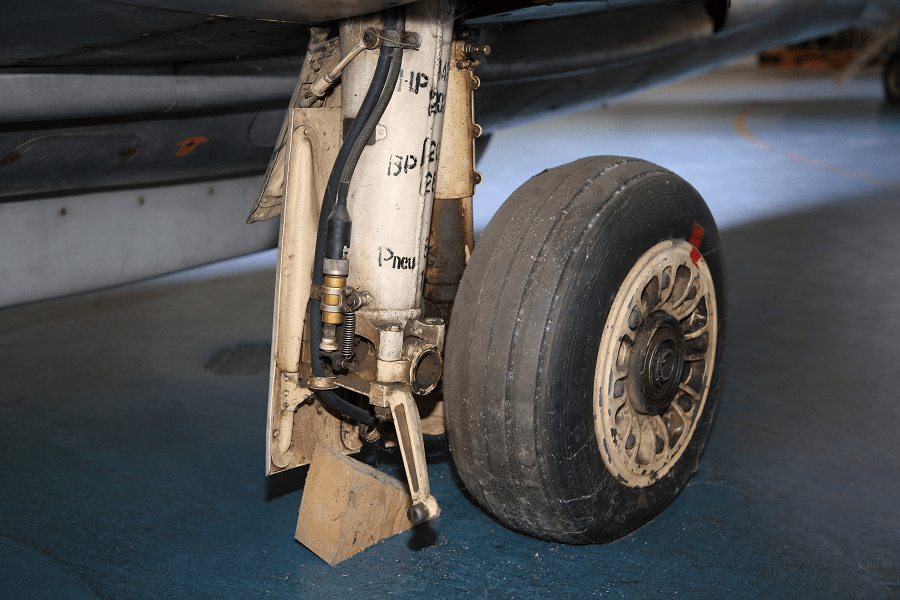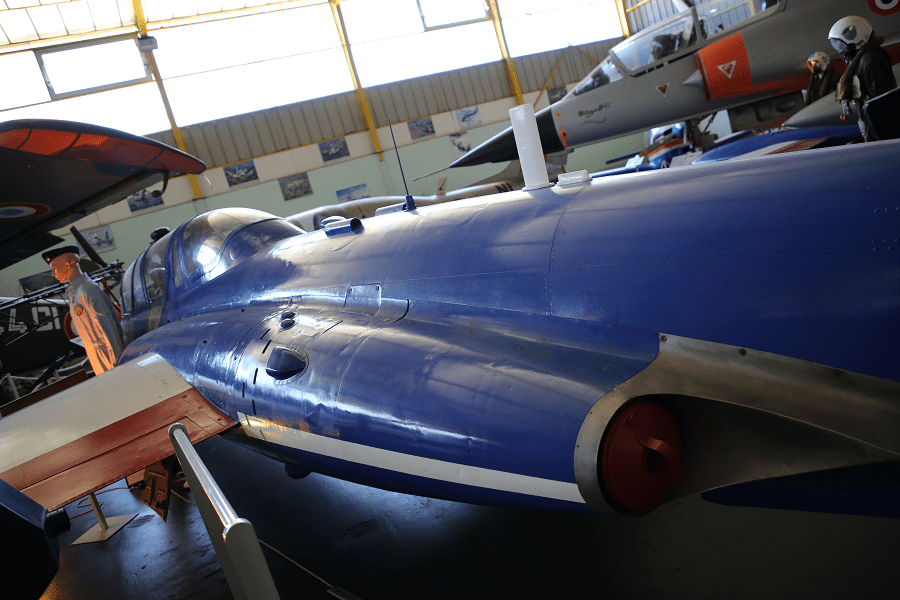Fouga Magister CM 170 F-TEPC. Made in 1962 by Potez Air Fouga.
Max. speed 715 km/h
The Fouga CM.170 Magister is a 1950s French two-seat jet trainer aircraft that was developed and manufactured by French aircraft manufacturer Établissements Fouga & Cie. Easily recognizable by its V-tail, almost 1,000 have been built in France and under licence in West Germany, Israel, and Finland.
In 1948, development commenced at Fouga on a new primary trainer aircraft design that harnessed newly developed jet propulsion technology. The initial design was evaluated by the French Air Force (Armée de l’Air, AdA) and, in response to its determination that the aircraft lacked sufficient power for its requirements, was enlarged and adopted a pair of Turbomeca Marboré turbojet engines. First flying on 23 July 1952, the first production order for the type was received on 13 January 1954. In addition, the related CM.175 Zéphyr was a carrier-capable version developed and produced for the French Navy.
While primarily operated as a trainer aircraft, the Magister was also frequently used in combat as a close air support platform by various operators. In the latter capacity, it saw action during the Six-Day War, the Salvadoran Civil War, the Western Sahara War, and the Congo Crisis. The Magister was also chosen by many aerobatics display team including the Patrouille de France (from 1964 to 1980). In French service, the Magister was eventually replaced by the Dassault/Dornier Alpha Jet. After its retirement by the French Air Force, Magisters were purchased by several private-owner pilots in the US and have since been operated in the experimental category.
Fouga (also known as Air Fouga) was a French manufacturing company established by Gaston Fouga at Béziers during 1920. Originally specialising in the repair of railway rolling stock, the firm eventually became most noted for the aircraft it produced from its woodworking facilities at Aire-sur-l’Adour.
The most successful product to be created by Fouga was the CM.170 Magister, a postwar jet-powered military trainer aircraft derived from the firm’s experiences with sailplanes. Many of its features, such as its slender tapering wings, reflecting the company’s sailplane heritage. During May 1958, Fouga was acquired by rival French aircraft manufacturer Potez; the company’s former facilities at Toulouse continue to produce aircraft as a part of the multinational Airbus Group.
Potez was a French aircraft manufacturer founded as Aéroplanes Henry Potez by Henry Potez at Aubervilliers in 1919. The firm began by refurbishing war-surplus SEA IV aircraft, but was soon building new examples of an improved version, the Potez SEA VII.
During the inter-war years, Potez built a range of small passenger aircraft and a series of military reconnaissance biplanes that were also licence-built in Poland. In 1933, the firm bought flying boat manufacturer CAMS.
The company was nationalized in 1936, following which it was merged with Chantiers aéronavals Étienne Romano, Lioré et Olivier, CAMS and SPCA in order to form the Société nationale des constructions aéronautiques du Sud-Est (SNCASE) on 1 February 1937.
Potez’s factories in Sartrouville and Méaulte were taken over by SNCAN and the Berre factory went to SNCASE.
After World War II, Potez was re-established as Société des Avions et Moteurs Henry Potez at Argenteuil but did not return to the prominence that the company enjoyed prior to nationalisation. In 1958, the company bought Fouga to form Potez Air-Fouga, but when Potez’s last design, the 840 (a small turboprop airliner) failed to attract customers, it was forced to close. The remaining assets were purchased by Sud-Aviation in 1967.















